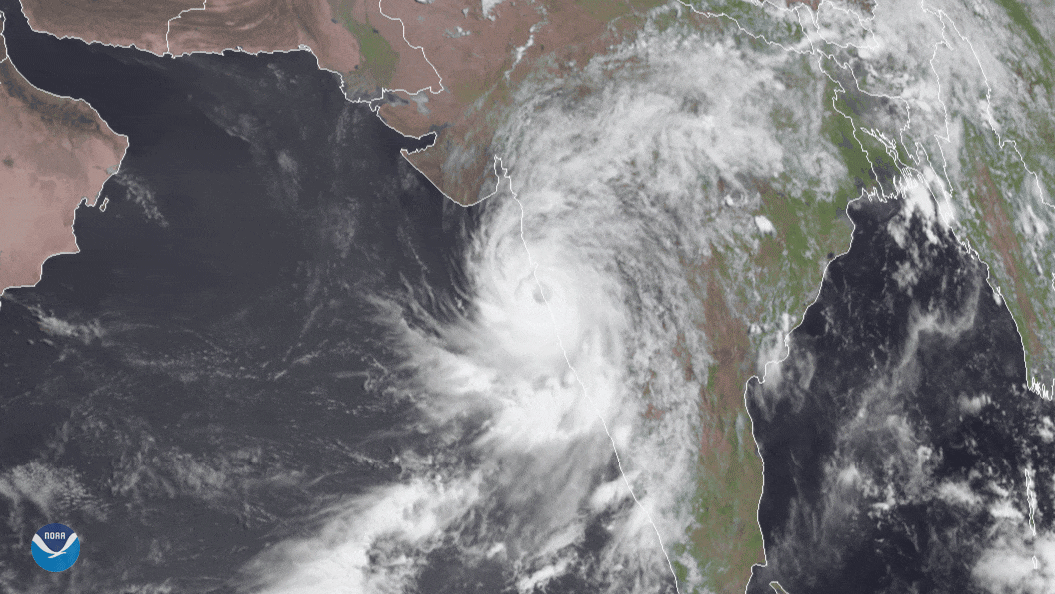
On June 3, 2020, Meteosat-8, which is operated by our European partners at EUMETSAT, saw Severe Tropical Cyclone Nisarga make landfall on the western coast of India. The cyclone was named from an April 2020 list that countries adjacent to the North Indian Ocean created, and is from the Bengali word নিসর্গ, which loosely translates to “nature” or “cosmos”.
The storm reached India's shores at 2:30 p.m. local time in Maharashtra district, 47 miles southeast of Mumbai. At that time, it had maximum sustained winds of near 70 mph upon landfall, with gusts up to 75 mph, which makes it a Severe Cyclonic Storm according to the India Meteorological Department’s (IMD) cyclonic storm scale.
This storm is happening during one of India’s cyclone seasons, which, according to this National Cyclone Risk Mitigation Project project page, “occur[s]in the month of May-June and October-November, with primary peak in November and secondary peak in May.” Additionally, Tropical Cyclone Nisarga is reportedly one of the worst storms to ever hit the western coast of India, which on historical average sees 84% fewer cyclones than the eastern coast.
In geostationary orbit at approximately 22,300 miles above the equator, the Meteosat-8 satellite operates over Europe, Africa, and the Indian Ocean. Meteosat-8 (launched from the Guiana Space Centre in Kourou in 2002) is positioned at 41.5 degrees and provides full disc imagery every 15 minutes. Meteosat-8 is equipped with the Spinning Enhanced Visible and InfraRed Imager (SEVIRI), which observes the Earth in 12 spectral channels and the Geostationary Earth Radiation Budget (GERB) instrument, a visible-infrared radiometer for monitoring the amount of radiation on Earth. Meteosat-8 is one of the four geostationary satellites operated by EUMETSAT (European Organisation for the Exploitation of Meteorological Satellites)."ltr">
